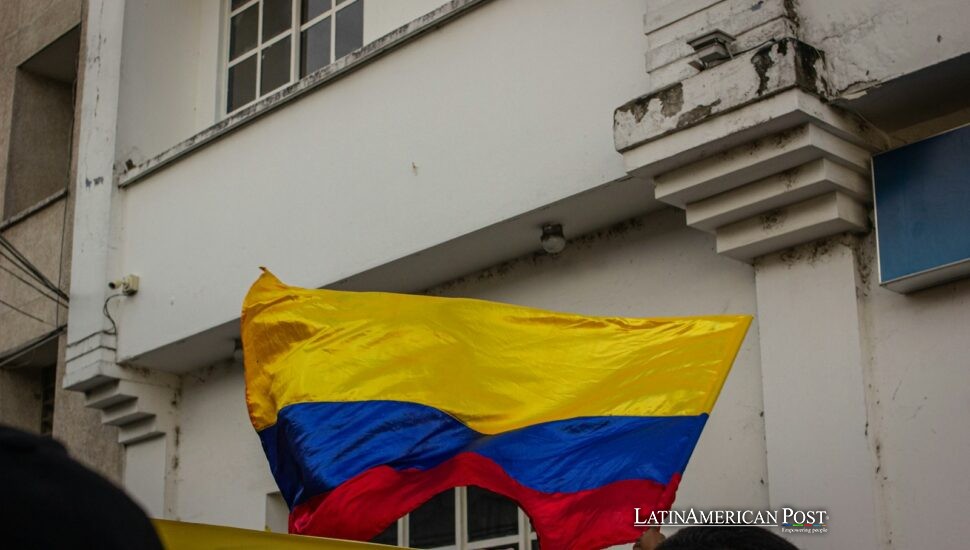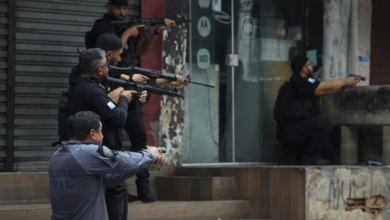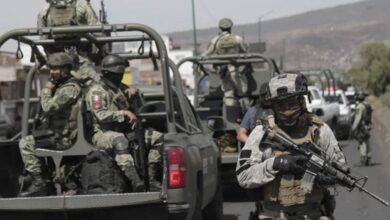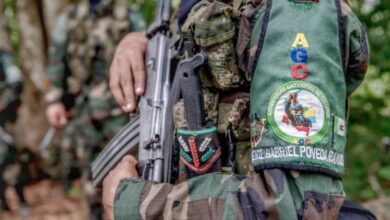Colombia’s Invisible Narcos: The Secret War Over Truth, Power, and the New Drug Economy

Fifteen years ago, a man folded his newspaper in a Panama City café and quietly surrendered to two U.S. agents. No guns, no chase—just a nod and a handshake that closed one of Colombia’s great criminal arcs. That man, Julio Lozano Pirateque, alias Patricia, had overseen nearly 900 tons of cocaine shipments and billions laundered through the usual offshore labyrinth. Extradited and forgotten after six years in prison, he has now re-emerged—not in a courtroom, but in a president’s speeches. Gustavo Petro accuses him of leading a shadowy network plotting to assassinate the head of state. The charge has reopened a deeper battle for control of Colombia’s story about crime, politics, and truth itself.
From Café Surrender to “Invisible Narcos”
The historian Petrit Baquero told El País that Lozano’s café surrender felt “almost cinematic”—a capstone to an era of flamboyant capos and burning jungles. Yet the latest leak from Colombia’s National Intelligence Directorate suggests that the old narco script has been rewritten. Petro calls the structure the New Drug Trafficking Board, or Nueva Junta del Narcotráfico (NJN), describing it as a quiet corporate hydra whose reach extends from emerald mines to soccer clubs to private-security firms. In the agency’s 21-page dossier, the players are labeled “invisible narcos.”
Unlike the silver-chain drug lords who flaunted their fame, these figures behave like CEOs. The report maps their centers of gravity in Madrid, Dubai, Mexico, and Turkey—cities with the logistics, banking, and plausible distance that insulate them from Colombian warrants. Investigators told El País that some NJN leaders now live comfortably in Spain, while others appear in the Emirates trade registries.
The same dossier attributes a dozen murders to the network, including the sniper killing of an emerald tycoon in April. What it does not confirm is any plan to kill the president. Intelligence officials admitted to El País that “there is no information to support this criminal group’s intention to kill Petro.” The president, citing unnamed “other state inputs,” insists there is—and has passed his suspicions to a skeptical Attorney General’s Office. The disconnect has turned an intelligence leak into a political earthquake.
Geopolitics, the Cartel of the Suns, and Petro’s Counter-Narrative
The dispute now stretches beyond Bogotá. For years, Washington has portrayed Venezuelan leader Nicolás Maduro as the face of the Cartel of the Suns. This supposed military-narco alliance justified U.S. sanctions and naval deployments around Venezuela. Petro has flipped the script. “The real traffickers,” he argues, “are the NJN,” not a Venezuelan deep state.
If he is right, the geopolitical logic behind America’s pressure on Caracas cracks. If he is wrong, his narrative risks legitimizing a rumor with the gravitas of a name. Officials told El País that neither the Prosecutor’s Office nor the national police has verified the NJN’s existence. Still, Petro repeats it from podiums and on social media, citing the group dozens of times since June.
The backlash has been swift. Donald Trump accused Petro of being an “illegal drug leader.” The U.S. Treasury sanctioned Petro, his family, and one adviser—a move that, as El País reported, stunned Colombia’s diplomatic corps. Petro has responded by framing himself as the target of the NJN and of global elites threatened by his reformist agenda. He has even claimed, again without evidence, that the group ordered an assassination attempt on opposition politician Miguel Uribe Turbay.
The result is a collision between intelligence and politics: when presidents treat briefings as narratives, facts become flexible. A dossier meant for analysts becomes a weapon in public opinion. The cost is legitimacy—once citizens see their leaders improvising villains, they stop believing the heroes, too.

Madrid, Dubai, and the New Corporate Camouflage
According to the intelligence summarized by El País, today’s traffickers operate like multinationals. Madrid has become their European hub. One figure, Jorge González, known as J. la Firma, faces indictment there for cocaine trafficking. Another, Alejandro Salgado Vega (El Tigre), lives in Dubai, which offers the anonymity of wealth and the convenience of nonstop flights to Africa and Europe. Colombia’s investigators also trace networks through Turkey, a “new haven,” and routes via Ecuador, Bolivia, Paraguay, Venezuela, and Australia.
Their money surfaces in industries that confer both glamour and opacity: emeralds, professional soccer, and private security. The emerald trade alone exported $127.5 million last year, a business awash in cash, fluctuating prices, and little transparency. Soccer clubs provide civic pride and ticket revenue—perfect conduits for money that prefers applause to scrutiny. Security companies offer something subtler: vehicles, weapons permits, and official-looking uniforms. When the state outsources protection, the line between public and private blurs just enough for a shadow economy to breathe.
This, experts told El País, is not uniquely Colombian; it’s the template of globalized crime. Yet Colombia remains one of its laboratories because enforcement still focuses on personalities rather than financial forensics. Without registries that expose beneficial owners or investigators who chase suspicious transactions rather than headlines, the “invisible” will stay that way. Invisibility, after all, isn’t magic—it’s paperwork and plausible addresses.
Fragmentation, Policy Failure, and the Hard Work Ahead
Baquero’s analysis is bleak but clarifying. “We have lost the major drug routes to the major markets,” he told El País. What remains is a shattered mosaic: 50-plus groups, from Albanians to Belgians to Latin American micro-cartels, collaborating transaction by transaction. The hydra no longer has a head to cut off. You can arrest a boss; you can’t arrest a network.
For Baquero, that fragmentation measures half a century of policy failure. The old wars on drugs decapitated hierarchies but fertilized the soil for smaller, faster actors. Supply didn’t shrink; it diversified. To rebuild credibility, he argues, Colombia must stop letting politics devour intelligence and start aligning enforcement with reality.
That means three things: first, evidence before drama. When leaders outpace their agencies, they hand criminals a free mystique. If Petro’s allegations are factual, he owes proof; if not, he owes restraint. Second, pressure the junctions, not the myths. Modern trafficking lives in brokers, accountants, logistics managers, and the corrupt at ports and banks—not in mountains with armed guards. Third, synchronize the state’s voice. When prosecutors deny what presidents affirm, the public assumes everyone’s lying.
The larger truth may be uncomfortable: Colombia’s drug trade has become too interwoven with legitimate commerce for simple solutions. The “invisible narcos” are not hiding in jungles but blending into boardrooms. Their violence is quieter, their profits laundered through respectability. The fight now is less about seizing cocaine than about reclaiming credibility. As Baquero warned, the café arrest that opened this story wasn’t the end of anything—it was a pause. The networks reorganized, politicians rewrote their lines, and the myth of the omnipotent cartel gave way to a subtler reality. To confront it, Colombia will need fewer speeches and more spreadsheets, fewer heroes and more auditors. Only then can the country tell a version of its drug war that is finally true.
Also Read: The Armada and the Illusion: Why America’s Drug War Is Fighting the Wrong Ocean





